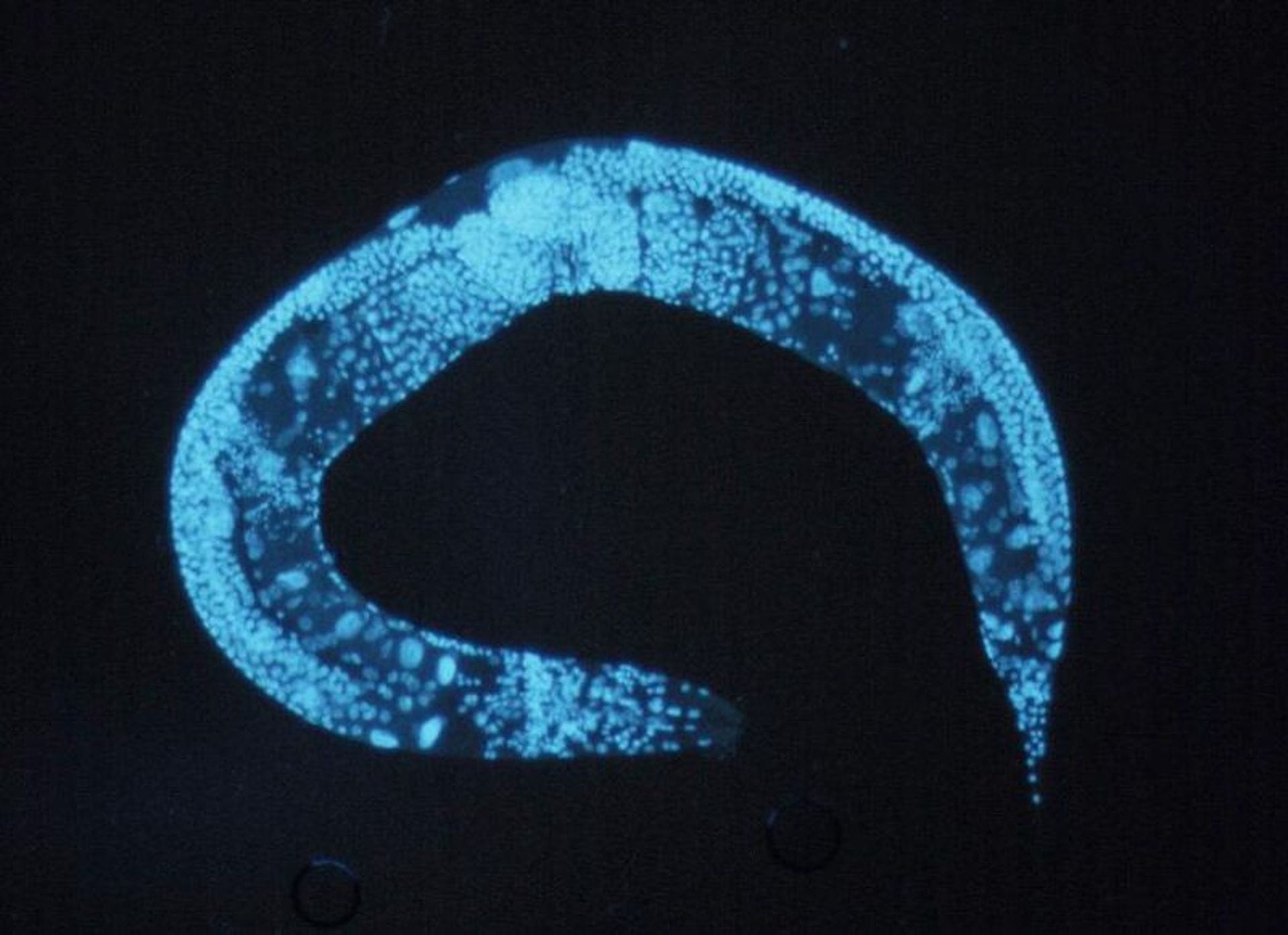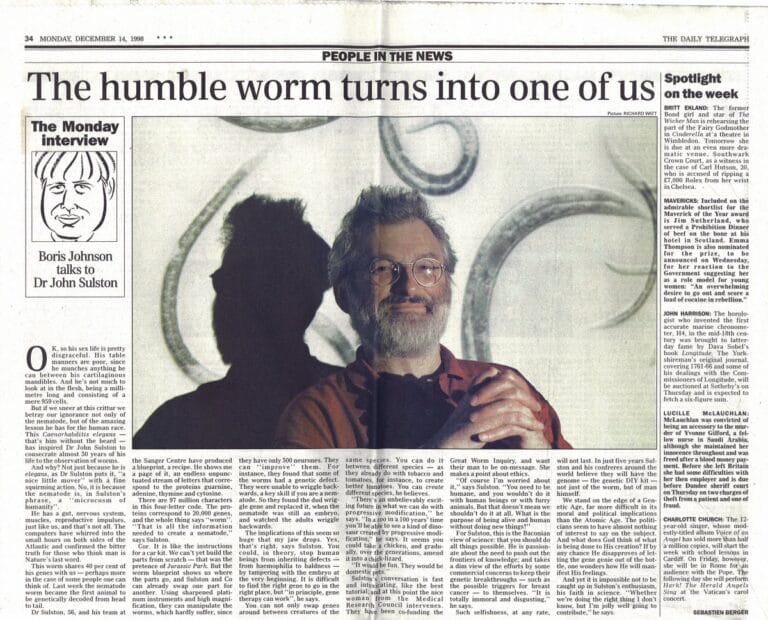The pilot project for the Human Genome Project: sequencing C. elegans

The nematode worm, Caenorhabditis elegans, was the first animal to have its genome fully sequenced. This milestone provided the proof of principle many people needed that the Human Genome Project would be possible.
Key terms
Genome
The complete set of genetic instructions required to build and maintain an organism.
DNA sequencing
The process of determining the order of bases in a section of DNA.
British biologist John Sulston and American biologist Bob Waterston both had a very specific interest in the nematode worm Caenorhabditis elegans.
Their work together, mapping and sequencing the genome of the worm, acted as a test project for the Human Genome Project. It provided an opportunity to perfect many of the techniques and technologies that would be used to sequence a human genome.
Playing a significant role in the Human Genome Project was not the initial intention of the C. elegans genome project. Originally, they just wanted to investigate the genetics of the worm to see if it revealed any secrets about its development that may help them to understand how humans develop.
But sequencing the C. elegans genome would become a critical milestone – and convince many that the Human Genome Project was a feasible, if ambitious, goal.

Sequencing the C. elegans genome was a critical milestone in genetic research – the first time an animal’s genome had been sequenced.
Searching for funding
Their first job in the quest to de-mystify the genome of the worm was to ‘map’ its genome. Mapping allows researchers to piece together genome sequences and locate important sections, such as individual genes. Genome mapping is vital for sequencing because it allows scientists to navigate large genomes and piece them together.
By the end of the 1980s, John, Bob and their colleagues had completed mapping the genome of the worm and – with one of the first Human Genome Project grants – progressed to sequencing it. Although DNA sequencing had been carried out before to decode the genomes of smaller organisms such as viruses, this was the first time that the genome of an animal had been sequenced.
However, funding and space to complete the project were in limited supply. John applied to the Wellcome Trust and Medical Research Council for a new institute to be built which could sequence the genome of C. elegans and contribute to the international effort to sequence the human genome.
His application was successful and so – in the summer of 1992, with a grant of £46.5 million from the Wellcome Trust – the Sanger Centre was born.


It took John and his team over 12 years to map and sequence the nematode genome.
A complete sequence – and the proof of principle for a bigger project
It took John and his team over 12 years to map and sequence the nematode genome, but the sequence was finally published in 1998 in the journal Science. C. elegans was already commonly used as a model organism in the lab and by sequencing its genome, John and Bob provided an invaluable resource and short cut to gene discovery.
By sequencing the worm, they proved that high-throughput, low-cost techniques could be scaled up – and would be suitable for sequencing the human genome. This helped to convince many who previously doubted that the Human Genome Project was feasible.
Both John and Bob were also committed to the free release of scientific information and made the genome sequence of C. elegans openly accessible to everyone online. These values continued during the Human Genome Project and made a huge difference to the progress made during the project. However, open access to information was also a topic of major contention as the Human Genome Project went forward.